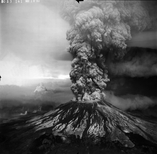
In actuality, I need to go back a few months earlier to March, and I was sitting in Math class when another student ran into the room hollering, "Mount St. Helens had just erupted." Of course, the image conjured up in my mind was that of hot molten lava oozing out of the crater. What a disappointment it was when I watched the evening news and saw it was only a little steam cloud and ash coming out of a vent. However, St. Helens did not disappoint for long and at 8:32am on a partly cloudy Sunday morning on May 18, following a small series of earthquakes the north face of the mountain violently exploded. The collapse of the northern flank of St. Helens mixed with ice, snow, and water created lahars (volcanic mudflows). These lahars flowed many miles down the Toutle and Cowlitz Rivers, destroying bridges and logging camps.
We lived in West Linn, a suburb south of Portland, Oregon at the time, and the family was on our way to church, when we witnessed several cars pulled off to the side of the road. We stopped to see what everyone was gawking at and saw a large mushroom-shaped column of ash thousands of feet in the sky. The dark gray clouds appeared to be seeking supremacy as one climbed on top of the other. The eruption continued for eight hours, and the ash circled the globe and turned day into night. In addition, the once perfectly cone shaped mountain which resembled an ice cream cone, now looked like someone had licked the top off.
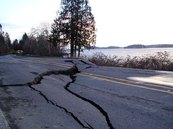
At 10:54am, I was out visiting friends not too far from home when the ground began to shake violently. At first, I didn’t think much of it for I had grown up in California and had experienced earthquakes; however, it only took a second or two to realize this one was big and it shook for 45 long seconds. The magnitude 6.8 earthquake was one of the largest recorded earthquakes in Washington state history. Although areas around Seattle and Olympia suffered damage, the damage and loss of life was minimal, because the quake was at a depth of 32 miles. I have no doubt if the epicenter were closer to the surface, it would have been catastrophic. The only damage to our house was a busted hot water tank.
Worried about Michael, who suffered from anxiety, I swung by the grade school to check on him, and found he had been comforting other children. The photo is a picture of the road that buckled and collapsed not far from our house. I have video of Michael standing in one of the cracks.
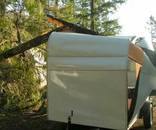
A powerful storm slammed into the Pacific Northwest region of the United States and southern British Columbia between December 14th and 15th. The storm produced hurricane force wind gusts and heavy rainfall. Wind gusts were as high as 70 to 100 mph. Our road looked like a war zone with hundreds of tree limbs littering the street and fallen trees downed power lines. We huddled in our house for three days without electricity and school had been canceled because there was no power. Actually, I was thankful, it only took three days for the power to come back on—we initially been told it would take a week. I was also grateful on several accounts, first we bought a generator the evening before the storm (even though we had never bought one before), and second, we had removed several large fir trees in the front yard only weeks earlier. Our property suffered minimal damage, although a tree crushed our trailer.
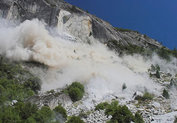
Not long after the eruption of St. Helens, we were camping in Yosemite National Park in California, where we heard the mountain had blown again. Because of the direction the wind was blowing, this time Portland was hit with a heavy layer on soot and ash. We laughed because we thought we had missed all the drama. Then sitting down for breakfast at the Yosemite Lodge, I looked up to see the chandlers sway from side to side, and heard a loud rumbling. A 6.1 quake shock the valley floor and caused falling rock, landslides, and shattered nerves. Authorities closed the trails and a series off earthquakes closed the park. We left our vacation early to head back home to ash covered roofs and cars.

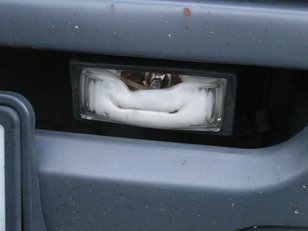
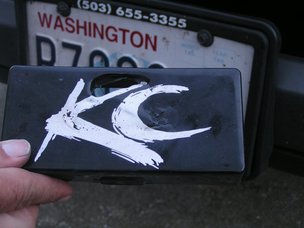
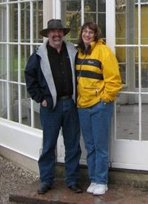
 RSS Feed
RSS Feed
